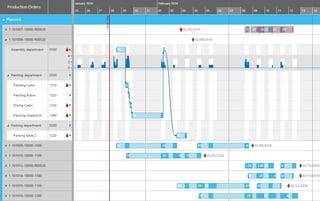“Gantt charts are uncool”, “Gantt's diagrams are dead” - these and many other similar statements can be read and heard in the media again and again. But – interestingly enough - in spite of all declarations of death, they are still very alive and are still a tool most commonly used for visualizing schedules of many different kinds.
The contradiction between all prophecies of doom and the longevity and up-to-dateness struck me as odd and I wanted to know more. The questions I wanted to get answers to were: What are the origins of these charts? What were the fields of application in the past and what are they today? Is there an evolution in terms of function and features?
Since the material I came up with was quite complex, I decided to split it up into a loose series of blog posts giving insights into the basic facts and features of this kind of charts and I start with shedding some light on the reasons why and where they are used.
Why Use Gantt Charts?
So, when we talk about the fact that these charts are still very popular, the first question to ask would naturally be: Why are they still in use? What are the advantages of this “old stager” for modern and high-performance time- and resource-oriented planning?
Their Advantages
Gantt charts are indispensable for modern scheduling since they offer a clear-cut overview of
- The tasks’ relation between one another
- Progress of the tasks
- Duration of tasks and project
- Resources and their utilization
- Dependencies
- Impacts of schedule changes
- Visual alerts in case of scheduling conflicts
Their Application Fields
Gantt charts offer multiple advantages: thousands of companies now use them to enhance communications, become more productive, improve collaboration, track and manage resources, make long-term forecasts, and track project results. Due to their universal applicability,
- they are used in:
- logistics companies
- fleet management
- service personnel scheduling
- production scheduling
- construction companies
- project management
- organizing trade shows
- producing publications
- website content creation
- product launches
- training staff
- by people who are, for example:
- production supervisors or production schedulers
- software developers
- software architects
- ERP system Microsoft Dynamics NAV resellers whose clients are in manufacturing, construction, professional services or services
- They are indispensable for
- communicating the plan or status of a project
- monitoring tasks within a project
- communicating the sequence and duration of certain tasks or processes of a project
- knowing what tasks depend on completion of previous tasks
- taking immediate corrective action
So, to me, the charts that Henry Gantt (and others) invented more than hundred years ago, today seem more alive than ever as they still very well fulfill their originally intended purpose as a context-sensitive tool to improve time- and resource-based scheduling decisions.
Your next steps
Taste for more basic facts ? Download our free ebook!
Want to dig deeper? Want to know, e.g., how Gantt diagrams are used to make production scheduling easier and more efficient? Read our blog post Production Scheduling Challenges: How A Gantt Chart Can Contribute.



